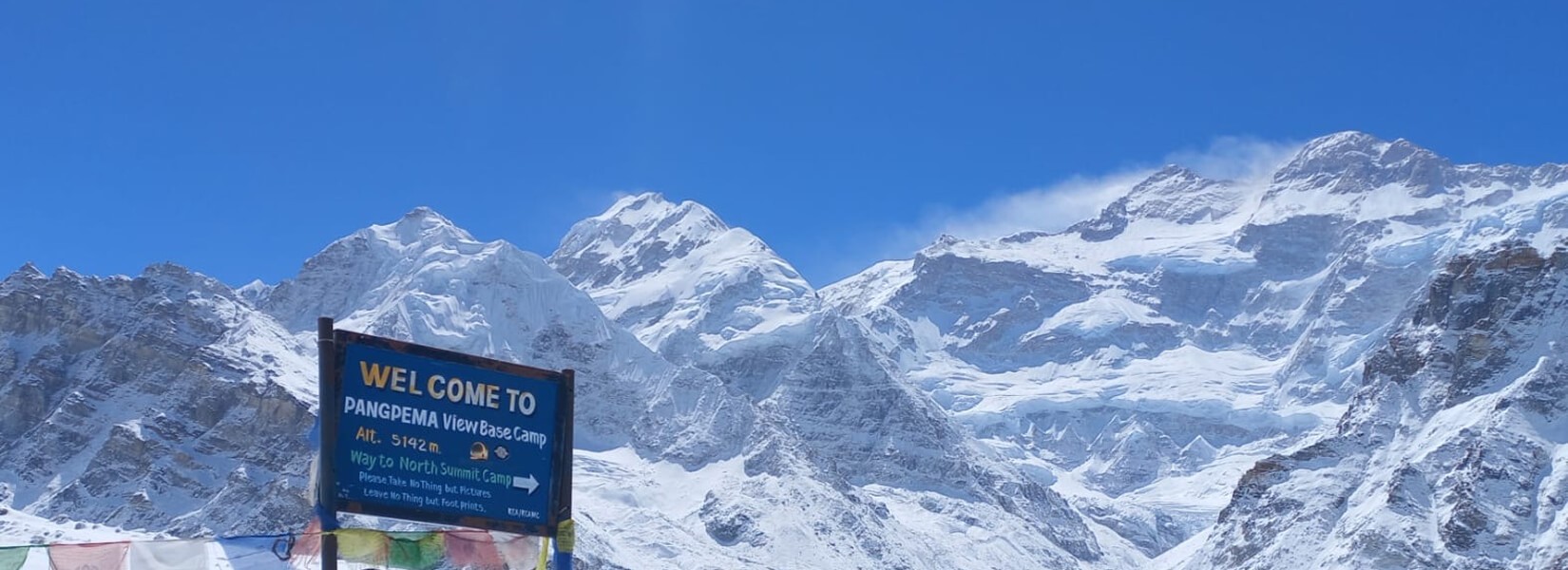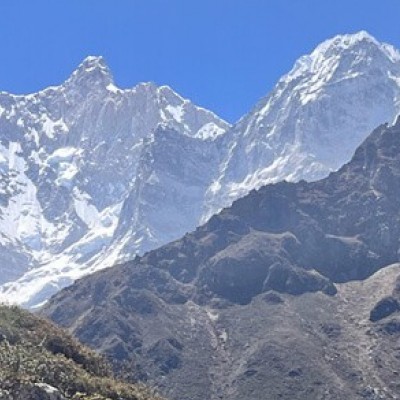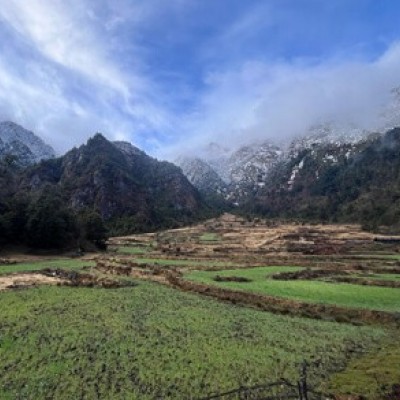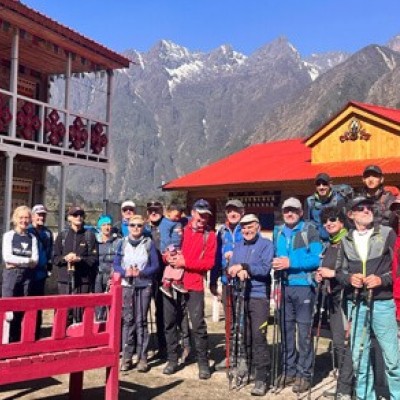Why should you understand Altitude Sickness and Its Risks in Kanchenjunga Trekking?
As Kanchenjunga region trekking leads you through alpine passes such as Sinion La, Sele La, and Mirgin La above 4000 m, following legendary mountaineers to reach the base of Mt. Kanchenjunga (8586 m) with awe-inspiring scenes, consider acute mountain sickness (AMS). The isolated terrain of the Kanchenjunga region has limited teahouses and health posts for treatment in the event of an injury or suffering from symptoms of AMS. Hence, explore prevention tips without compromising the rewarding experience in the wilderness, where landscapes offer hidden natural treasures.
What are the symptoms of altitude sickness?
Trekkers should tackle the obstacles, whether they are caused by natural disasters or high elevations. The most common problem that occurs during the Himalayan hikes is acute mountain sickness, which initially presents with simple symptoms and may transform into serious circumstances due to ignorance. As the Kanchenjunga trekking also takes you to higher landscapes 5000m, trekkers should learn to handle the situations. The major reason for Acute Mountain Sickness (AMS) is that your body has difficulty adjusting to thin air at higher elevations after sudden altitude gains without sufficient acclimatization at pausing spots like Ghunsa and Khambachen.
Listen to your body, and descend to lower elevations while feeling its signs to prevent turning into severe medical complications like High-Altitude Cerebral Edema or High-Altitude Pulmonary Edema. Implement the Kanchenjunga trekking precautions to avoid such kinds of potential health issues, whether you have prior experience or not, to guarantee a responsible and enjoyable journey in the wilderness of Nepal. The common symptoms of high altitude sickness are shortness of breath, fatigue, coughing, swelling of hands, face, or feet, nausea, headache, dizziness, difficulty sleeping, loss of appetite, and others.
Does Altitude Sickness Affect hikers during the Kanchenjunga trekking?
Whether you are a novice or experienced trekker, there is a high possibility of experiencing altitude sickness during the Kanchenjunga treks, as they take you above 5000 m, traversing several mountain passes and high settlements. Hikers who have been to mountainous terrain can adjust to the environment quickly. However, a beginner with no prior experience may face more difficulties. Accordingly, read this blog for Kanchenjunga trek safety tips that help to overcome the thinner air, as acute mountain sickness impacts every trekker regardless of fitness level, age, or sex during any Himalayan adventure.
What are the Essential Kanchenjunga Trekking Ways to Minimize the Risk of Altitude Sickness?
As there is a saying, “Prevention is better than a Cure”, every trekker should follow the guide’s suggestions and recommended precautions to ensure safeguarding during Himalayan hiking. Some essential information to avoid more challenging situations is as follows:
Why is an acclimatization period key to successful Kanchenjunga treks?
Rushing during the Kanchenjunga trek may increase the physiological burden on your body, and sometimes the situation becomes worse as you reach above 3000 m / 5000 m without adequate acclimatization at several high-altitude pausing spots such as Ghunsa (3400 m), Khambachen (4145 m), and Lhonak (4780 m). As the appropriate acclimation is one of the best options to defend against acute mountain sickness while hiking from lower to higher terrain, do not skip it to complete the journey sooner.
You might force yourself with a reckless pace to reach higher vantage points due to the temptation of more breathtaking scenery. However, we advise every hiker to follow a gradual and consistent ascent, avoiding altitude gain of more than 300 to 500 m per day once you reach above 3000 m. Accordingly, follow the guide’s high-altitude Kanchenjunga trekking advice, which helps you to cope with high-altitude effects.
What are the hydration and nutrition tips to avoid altitude sickness during the Kanchenjunga Trek?
As Sanitation on the Kanchenjunga trail matters for health, keeping your body hydrated with nutritious food means maintaining your health for ascending higher points with steep ascents. Accordingly, fuel your body with high-energy meals and abstain from dehydrating items to minimize the chance of experiencing altitude sickness on Kanchenjunga trails. Below, check out the key points, which are also taken as the health and safety tips for the Kanchenjunga trekking:
- Drink enough water (approximately 3-4 liters a day), and absorb most liquid substances like fresh juice and also energy drinks.
- Eat food rich in carbohydrates, such as Dal Bhat, boiled potatoes, noodles, Tsampa, biscuits, granola bars, etc.
- Stay away from caffeine and alcohol to reduce dehydration during the journey.
- Is a Trekking First Aid Kit Essential to handle altitude sickness on the Kanchenjunga trek?
A seasoned trekker can handle the situation in the event of suffering from high altitude sickness during trekking in the Kanchenjunga with the support of a first aid kit, which has medications like Diamox and other health treatment substances. Carrying medicine is not enough when a trekker’s health becomes more serious. Therefore, ensure that your guide knows emergency procedures or other Kanchenjunga trek safety tips and has a connection to the local administration.
Do not forget to put portable oxygen canisters, vomiting prevention medicine, and painkillers in your backpack to overcome altitude challenges. Not only these medicines, but also keep GPS and trekking maps, as they are the most helpful gear in remote trekking areas, and guarantee that medical or health posts are available. Obtain travel insurance that covers emergency helicopter evacuation coverage in high-elevation landmarks.

How to prepare physically and mentally for the Kanchenjunga trekking?
Kanchenjunga trekking is more than an ordinary journey, since one of the most remote landscapes in far eastern Nepal presents you with numerous tough stretches, together with rewards, requiring proper mental and physical fitness for Kanchenjunga trekking for a successful odyssey. Trekkers can do as recommended below for building fitness and increasing willpower to traverse high passes, landslide-prone areas, avalanche risk zones, and rough terrain.
What are the physical fitness tips to trek to the Kanchenjunga region?
Kanchenjunga offers you a golden chance to challenge your stamina and strength in pristine and secluded areas like never before. We suggest high-altitude Kanchenjunga trekking advice to prepare your body 2 or 3 months before beginning, as hiking at high elevations and rugged topography for long periods may not let you soak in the magic of the surroundings fully due to fatigue and altitude-related issues. Since Kanchenjunga treks become more than simple Himalayan hiking, make yourself physically strong. Read the following beneficial tips for overall body fitness to minimize the potential chances of injuries and health problems on the Kanchenjunga trails.
- Short hike with day backpack to the nearest destination of an elevation above 1500 to 2000 m.
- Engage in cardiovascular exercises such as swimming, cycling, running, and jumping.
- Improve the power of leg muscles with an upstairs climb, lunges, and squats.
- For a better pose, you can do Tree pose yoga, heel-to-toe walk, single-leg stand, etc.
- To prevent injuries, build a strong core using plank holds and crunch exercises.
Why Is Mental Preparation Crucial for Remote Kanchenjunga Treks?
Whether you have previous experience or not, mental preparation is also crucial, together with Physical fitness for Kanchenjunga trekking, since most areas are secluded with less marked trails in the Kanchenjunga region. Avoid unnecessary tensions; build a positive mindset to make a deep connection to the region and its local communities. It is quite challenging to hike through the isolated terrain for long days, experiencing peace in the environment with limited communication. However, trekkers can complete the journey with proper mental preparation for the remote areas of Kanchenjunga as follows:
- Involve yourself in yoga practice or meditation to enrich focus and reduce anxiety in remote and demanding parts of the trek.
- Mentally prepare to face various troubles due to the unpredictable weather of the region.
- Learn about local cultures, traditions, and some phrases, which make it easier to be familiar while staying at teahouses, and you do not feel isolated.
- Know the basics of wildlife behavior found on trails, and discover safety tips and respectful observation, ensuring your security and wildlife’s protection.
How Can You Stay Safe and Healthy on the Kanchenjunga Trekking Trail?
As we discussed above, how we handle tough situations and the best way, let’s explore some practical Kanchenjunga Trekking Precautions to stay healthy during the Kanchenjunga trekking. The changing climate of the region poses challenges while hiking in the remote corners; consider carrying appropriate trekking gear for personal safety throughout the journey.
Why is Packing Smartly crucial for a Safe High-Altitude Trekking Experience?
Although you are ready with physical and Mental preparation for the remote areas of Kanchenjunga, a strategic plan for essentials is necessary not only for comfortable walking on strenuous trails but also as a matter of safety. As the selected gear, clothing, and snacks may determine your success or failure on the journey, ensure you are equipped with the right trekking tools, suitable for changing weather and more challenging terrains for prolonged days in the Kanchenjunga region. Prepare to tackle the mountainous climate, whether the environment presents you with harsh cold or heavy rainfall. Here are items you must have on your packing lists for Kanchenjunga treks:
- Buy Layers (Base, Mid, and Outer - waterproof and windproof), which are durable and help you stay warm and dry.
- Trekking boots with a sturdy grip and ankle stability
- Trekking poles and Headlamps with extra batteries to navigate steep landmarks during early morning and dark evening.
- Personal items and Toiletries ( Diary, Journal, biodegradable soap, toothpaste and toothbrush, toilet paper, and quick-dry towel) for Sanitation on the Kanchenjunga trail.
- Safety items (water-purification tablet, sunglasses, sunscreen, insect repellent, medicines like Diamox, etc.)
- Pack snacks including energy/granola bars, chocolates, cookies, dried fruits, nuts, and instant noodles, as shops are limited on the trails.
Why Are Trail Safety and Reliable Communication Vital in Isolated Regions?
Kanchenjunga trails are less marked in comparison to other, more commercialized trekking routes such as the Annapurna or Everestpaths, requiring a seasoned trekking guide and experience hiking at high elevations. As you rise into the upper reaches of the trail, you can not communicate properly with your family members and authorities due to a lack of cellular networks. However, with proper preparation and the right hiking gear, you can securely face challenges on trails and get rescued on time even if you are injured. With the support of high-altitude Kanchenjunga trekking advice from an experienced guide, you can complete the journey most safely.
How do a guide and a porter support safe trekking?
A professional guide can handle any kind of circumstance, as they have been trained and have many years of Himalayan hiking experience. Due to safety concerns, the Nepal government has also assigned strict rules, not allowing solo trekking in any destination, including Kanchenjunga. Although hiring a local porter is not mandatory, we suggest you employ an experienced porter to be free from the stress of carrying heavy loads during the journey.
Trekkers arrange essential logistics, address health problems, and alert the rescue team in case of emergency, whereas porters carry your trekking gear on risky paths too. Hence, enjoy the off-the-beaten-path trek with crucial information and weather updates through a guide. Without the chance of losing the trail, focus on your journey to savor the scenery around you.
Why Are GPS Devices and Maps Vital for Safe Kanchenjunga Trekking?
Crossing the tough parts of the Kanchenjunga trail, including mountain passes, glacial moraines, and rugged terrain, is a major hiking challenge, requiring a detailed map and a GPS device together with a guide and a porter to find out the exact locations and the right paths to ensure security and reduce the possibility of going off-route in mountainous terrain with less marked paths. Trekkers can take both digital and paper maps, since a GPS device gives real-time geolocation monitoring and emergency connectivity functions, while a traditional topography map works as a trustworthy option in case of battery drain or poor satellite reception.
Wise hikers do not rely only on a smartphone because of the limited network signal range at high altitudes. Ensure that your guide has sufficient trekking tools to identify an alternative way when the chosen way is blocked due to natural disasters such as avalanches, floods, or landslides.
Why do you need to stay updated about weather conditions on Kanchenjunga treks to avoid challenges?
A seasoned trekker and an expert guide can predict the weather of the Himalayas according to the elevation profile. However, observing up-to-date weather forecasts on the Kanchenjunga trails plays a vital role in enhancing the entire journey’s experience. You can be alert and prepare for the harshest situations due to sudden storms, heavy rainfalls, and snowfalls. According to the climate updates, adjust your climbing plans, know Kanchenjunga krekking Precautions, balance your walking speed, and retreat to a safety spot, minimizing possible threats.
We generally suggest that trekkers wait to begin hiking until the fog is cleared, as you can not see the trail properly, which can lead to a perilous situation and losing the main trail. Hence, staying updated about the forecast is one of the most effective trekking safeguards, guaranteeing a more comfortable, safer, and incredible journey.
What other tips are there to manage risks and stay healthy at high elevations?
Responsible trekkers not only prepare for packing the backpack but also choose the right travel insurance and plan for being more health-conscious and having a responsive trip in the Himalayan regions like Everest or Kanchenjunga. Like other health and safety tips for the Kanchenjunga trek, you should also know the following:
Why Should You Consult a Doctor Before Trekking Kanchenjunga with Medical Conditions?
As previously informed, secluded areas of the Kanchenjunga have limited medical/health posts, and hikers can not have instant treatment in case of critical situations. Accordingly, we advise every individual to consult a doctor before venturing on the trip, especially patients with diabetes, heart disease, and asthma, to avoid potential risks on the trails.
With the best consults, you can make yourself ready for the trek, adjusting medications for changing elevations and planning action for emergencies. After informing you about everything about the trip, the doctor might also prescribe essential vaccinations, preventive medicines, and respiratory aid to avoid particular health issues. If you want more budget-friendly trekking by minimizing the need for a helicopter rescue, ensure that you have medical advice from a certified doctor.
Who Needs Travel Insurance for the Kanchenjunga Treks?
We usually advise hikers to obtain the right travel insurance through a reliable trekking agency, as it works as a security while walking on the strenuous terrain of Kanchenjunga and is a key to a successful trip, like the importance of Sanitation on the Kanchenjunga trail. Although you prepare mentally and physically 2 or 3 months before, you need to have insurance that covers expensive helicopter evacuation above 3000 m / 5000 m in case of emergency. Insurance covers medical treatment at hospitals when your health condition worsens due to severe weather, altitude sickness, or unexpected incidents.
In addition, the insurance also saves expenses when unforeseen events occur, including flight delays or cancellations, personal belongings damage, loss, or theft. Minimize risks and enjoy the awe-inspiring atmosphere of the region by choosing the best insurance.
How Does Supporting Local Communities Benefit Your Trekking Experience and Well-being?
Making a deep connection with locals and respecting every community’s cultures and traditions means a lot throughout the journey, as they run accommodations, providing comfortable rooms and fresh food. Learn the authentic cultural heritage and do not get involved in activities that impact the environment for sustainability trekking. As locals know the climate pattern and local ways to prevent altitude sickness, you should understand the ways to engage with inhabitants of the region, enhancing your ethnic exposure.
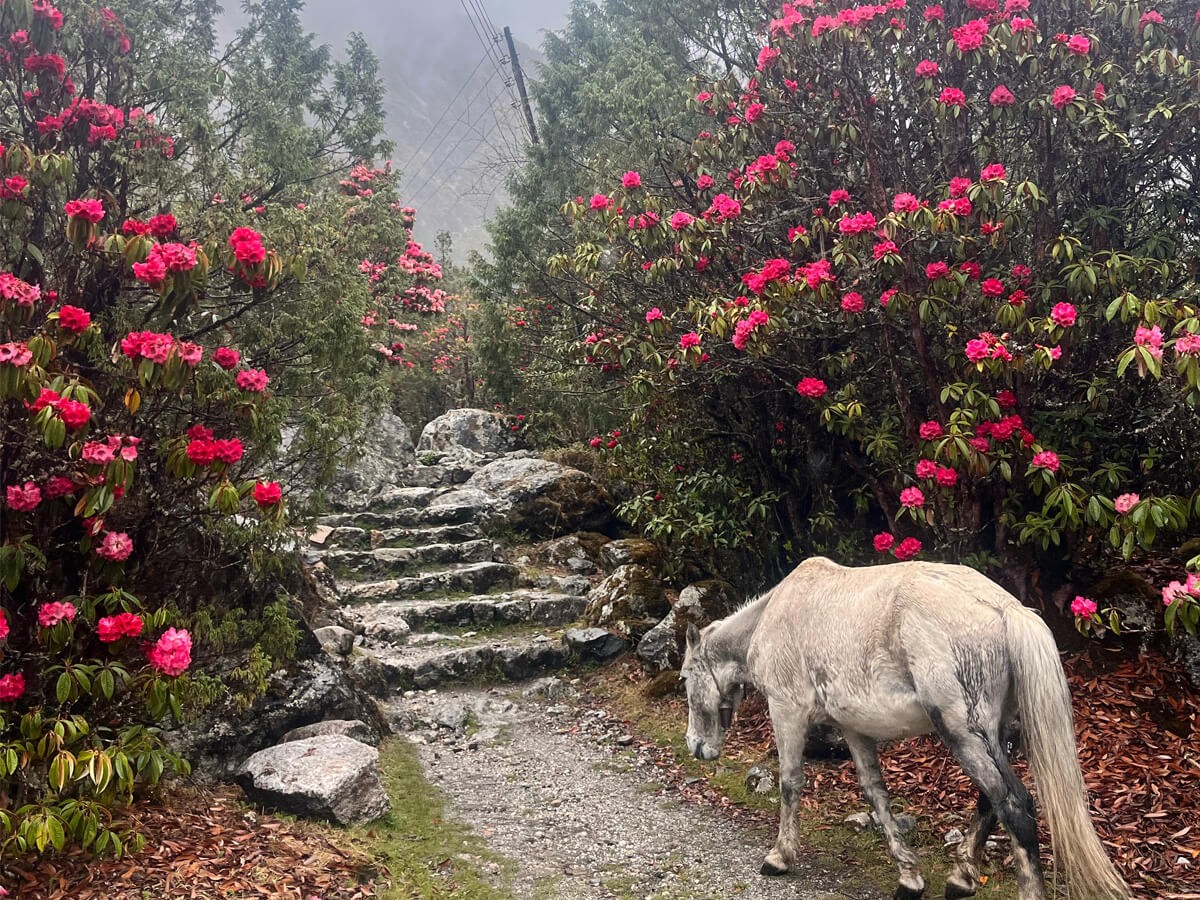
Why is timing important to ensure a safe Kanchenjunga trekking?
Spring (March to May) and autumn (September to November) are usually considered the optimal periods of the year to trek in Nepal, including the Kanchenjunga region, as they offer you the best experience with stable weather and moderate temperatures. Hiking during these seasons not only makes you comfortable walking on dry trails but also offers the most breathtaking vistas of towering peaks such as Kanchenjunga, Kabru, Jannu, etc.
Get a fortunate moment to capture the activities of wild animals in their natural habitat on your camera reel while walking through the Kanchenjunga Conservation Area. As several festivals occur during these months, you can have a deep insight into the locals’ cultures, getting involved in different festive functions. Besides these benefits, the most essential part of the trekking season is your safety and health, since the risks of avalanches and landslides are lower due to minimal rain and less snowfall.
Most people migrate to lower elevations in winter and monsoon, closing teahouses due to severe cold and natural disasters. Accordingly, we suggest that you trek to the Kanchenjunga region during spring or autumn, ensuring reliable accommodation, food, and transportation. Less slippery paths let you walk more comfortably.
Conclusion
To sum up, follow the provided health and safety tips for Kanchenjunga trekking to make it a once-in-a-lifetime experience without bodily and emotional stress. If you love such iconic trekking to one of the most favored pristine regions, you can select us, as we prioritize your preferences. We help in making your dream journey true, ensuring your security, and providing sufficient Kanchenjunga trekking precautions.
However, we also have packages for easier and moderate-level trekking, including Everest Base Camp Trek, Annapurna Base Camp Trek, Ghorepani Poonhill Trek, Langtang Valley Trek, and Mardi Himal Trek. Furthermore, for queries, contact us on WhatsApp or email.
